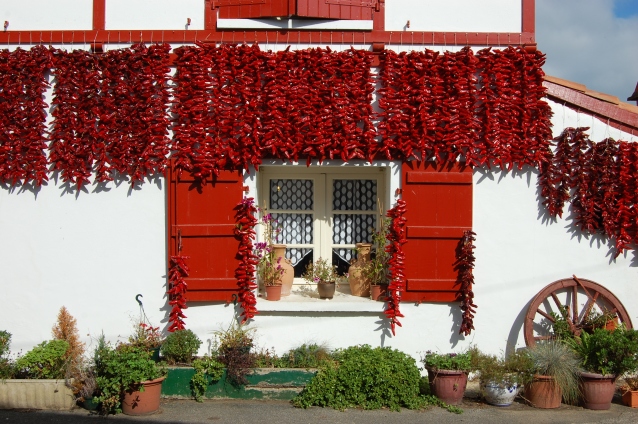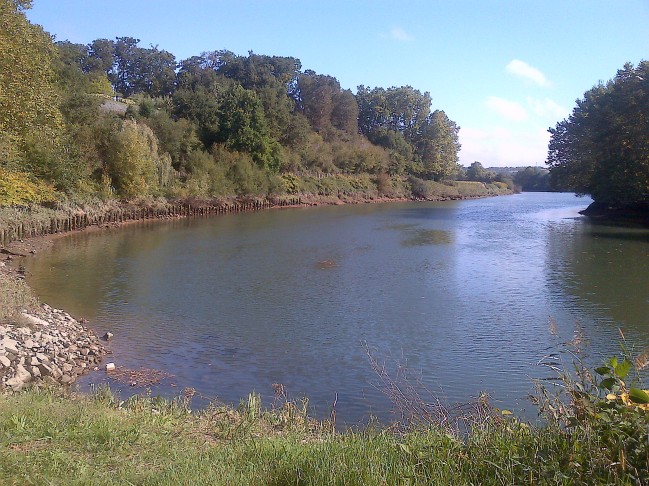Cambo-les-Bains to Urdax (28 km)
Friday, 30 September, 2016
After my experience of walking from Ustaritz to Cambo-les-Bains, I did not expect there to be a convenient path or a quiet country road to Espelette. So for five kilometres I walked along a very busy main road, frequently stepping well back and holding on to my hat every time a monstrous truck came hurtling by. And I lost count of how many drivers I saw talking on, or fiddling with, their phones. It was a relief to get off the race track and into Espelette.
Espelette is an attractive town, famous for its production of dried and powdered red peppers. Apparently they are sold at a covered market every Wednesday. As it was Friday, I was quite happy to have missed the market, as I am not a great enthusiast of crowds.

But my objective in going to Espelette was not to go shopping, it was to pick up the Camino de Santiago, which would lead me up the Baztan valley, over the Pyrenees and on to Pamplona. I spotted the typical yellow arrow marking near the church, but I was not able to find a second.

I asked several people for directions, but without luck. Even in a busy bar nobody seemed to know anything of it. Eventually I found a second and subsequent yellow arrow marks at the edge of the town, and started off in what I believed to be the direction of the next village, Ainhoa, which was about 6 km away.
But after ninety minutes of following the yellow arrows, of toiling up and down steep rocky paths, seeing only deserted farm buildings, and not a soul in sight, I started to feel uneasy. In the distance I saw a couple of modern looking houses on the other side of a valley, one with a car parked outside. So I set off down another steep rocky path, across a stream and up the other side. By the time I got to the houses, nearly two hours had elapsed since I left Espelette.
A woman answered my knock. She informed me that she knew nothing of a path to Ainhoa or a Camino de Santiago, but she could direct me to the main road, which involved retracing much of the way I had already come, and following another country road. I was quite lost. I eventually came to the main road from Espelette, with four kilometres to go to Ainhoa. In three hours I had progressed two kilometres towards Ainhoa.
The rest of the ‘hike’ along the main roads, through Ainhoa and on to the Spanish border at Dantxarinea, was relatively uneventful, but quite tiring, as it was a hot day.
Dantxarinea was something of a surprise to me. I expected a small run-down border town, no longer with a function, since the abolition of EU borders. Instead it turned out to be a bustling modern commercial centre stretching along both sides of the main road, with five service stations and very many large stores plus bars and restaurants.
Once across the border, the route was clearly marked, and more than once I was greeted with the traditional – buen camino. It felt as if I had come home. The road gently descended, until 45 minutes later I was in Urdax.

Why did I become so lost earlier in the day?
Until I go back and retrace my steps, I will not know. But I did receive something of a consolation in being told that evening, by my host, that it was quite a common experience among pilgrims starting in France.
And what had intended to be a walk of about 18 km, for me ended up as 28 km.


